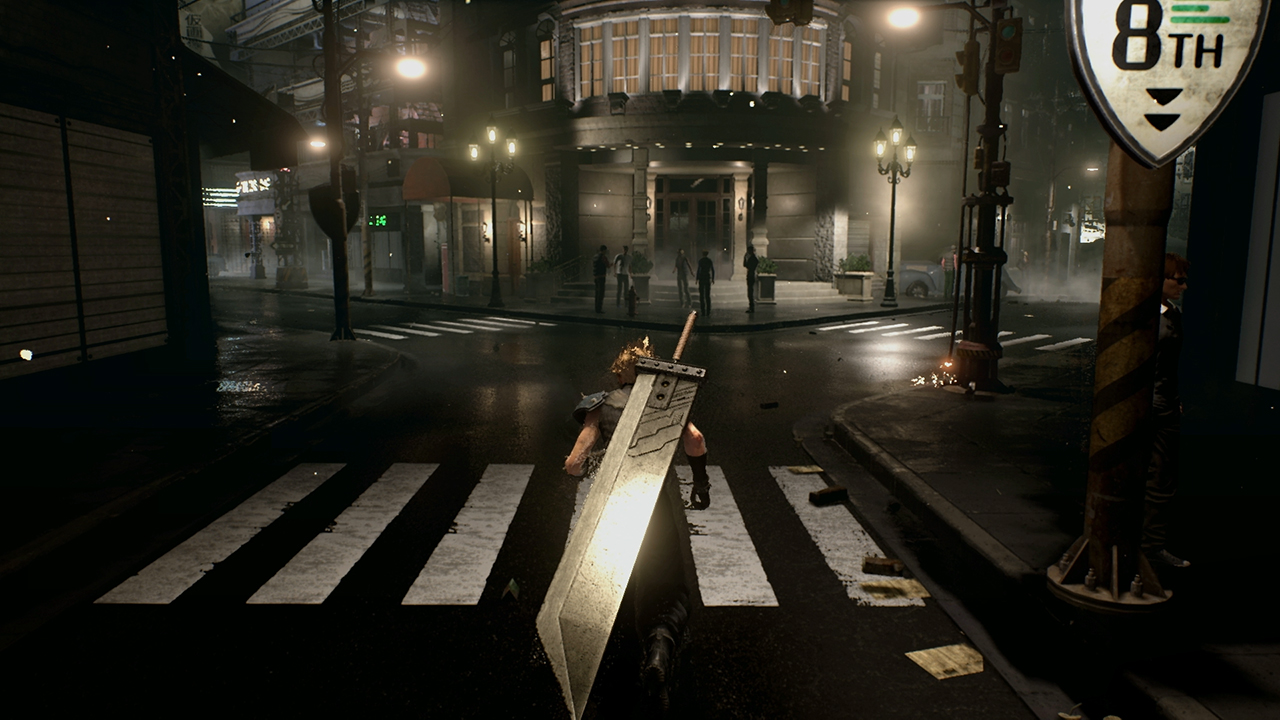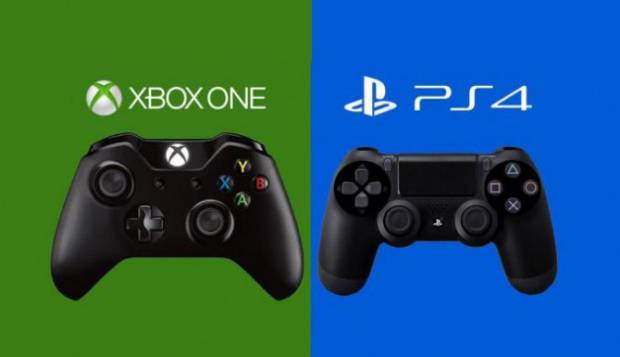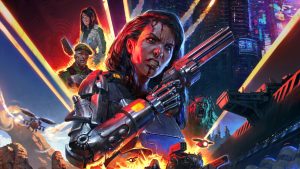
Of the many graphical technology companies that have stood out in the gaming industry over the past several years, Geomerics is close to the top. As part of CPU/GPU designer ARM, Geomerics is responsible for Enlighten, one of the best global illumination systems used in the market with games like Mirror’s Edge: Catalyst, Overwatch, Street Fighter 5 and upcoming projects like State of Decay 2 and Final Fantasy 7 Remake.
GamingBolt had a chance to speak to marketing manager Ellie Stone about the future of Enlighten and how the company is meeting the demands of the industry, evolving as hardware changes and further expanding on the realistic lighting possibilities in video games.
"High fidelity, real-time global illumination is made easy in games with large worlds – not just on PC but on console as well."
What has been your goal with Enlighten going forward especially as games demand more and more realistic lighting solutions?
Enlighten has always aimed to do more with less – to enable artists to provide ever more advanced lighting effects within a smaller performance budget. Our other product goal is to help as many types of games as possible benefit from efficient dynamic global illumination effects, including mobile and VR applications. Our recent work on the Enlighten large world feature set is an example of this. Previously, delivering efficient support for time of day or weather effects with Enlighten was challenging. Now high fidelity, real-time global illumination is made easy in games with large worlds – not just on PC but on console as well.
Can you detail the various advancements made to Enlighten and how they’ll benefit game development in the coming years?
The large world feature set is our most important development of the past year. The new level of detail mechanisms for probes, terrain and light maps solve distant geometry at lower resolutions than nearby geometry. With these we have found that the cost of computing dynamic global illumination for open world scenes has more than halved; this performance saving means that developers can produce even larger worlds with high-quality dynamic lighting effects; they can add greater real-time lighting into the same size of worlds with the same performance cost; or they can simply deliver the same quality real-time global illumination in the same size world and allocate the saved CPU time to other effects.
In 3.05, the release that has just recently gone out, we announced a number of advancements to Enlighten’s mobile support. Especially in Asia, where mobile game budgets can be huge, we see great interest for advanced lighting effects in mobile games. The crux of mobile development is the ability to provide a good user experience on mass market devices – not just the latest premium smartphone! To this end, we have adapted Enlighten to offer a more customizable performance-quality balance, such as with the light map relighting model.
With more and more games going open world, how does Enlighten tackle dynamic global illumination, especially in the console space given the hardware available?
Producing a demo concurrently with technology development provides a much deeper insight into feature requirements. Seastack Bay, produced in collaboration with Ninja Theory, the developers of Hellblade, was central to the production of a well-rounded large world feature set. On top of providing extensive testing of the LOD mechanisms outlined above, Seastack Bay urged the programming team to consider other elements that commonly occur in large worlds, for example trees, grass or rocks. As a result, we introduced new technology into our probe systems, for example per-pixel probe interpolation that delivers higher quality lighting for large objects.
In terms of being able to address large worlds in the console space, the level of detail efficiencies combined with the fact that Enlighten runs independently of the render thread means that the solution is also able to tackle dynamic global illumination in the console space effectively.
How is Enlighten handling the transitions between day and night or indoors versus outdoors?
When compared to volume-based techniques, or even DFGI, Enlighten offers a clear advantage in terms of quality, memory efficiency and scalability – in particular being able to handle both indoor and outdoor environments equally well. This means artists can use a single lighting solution across all different environments safe in the knowledge that the output will be consistent.

"The virtual reality space is one that we are looking at with great interest. Humans have a subconscious understanding of the way in which light works thanks to a lifetime of exposure to the physical world."
Could you tell us more about landscape lighting and the new features Enlighten introduces for the same?
One of the most interesting new elements of Enlighten is the way in which it can provide better lighting for trees. Trees can be lit by probes and contribute global illumination into the scene. Thanks to our new per-pixel probe interpolation technology, they receive higher quality graduation of lighting across the breadth and height of the asset. What is more, lighting trees with probes is much easier for artists to manage than lighting them with light maps because they don’t need to handle any complicated UVs.
How has the addition of LOD support for large terrain lighting been beneficial, both for the look of the terrain and hardware performance?
Besides the ability to add time of day or weather effects to a game with high-quality global illumination updates, Enlighten makes certain geographical features possible for the first time. If you think of most large open world scenes, they are mainly flat; this is because lighting highly vertical areas in an artefact-free manner is hard – even if the lighting results are baked. Enlighten is a multiple-bounce global illumination solution. It enables highly occluded areas, such as a gorge or a cavern, to be lit to high quality with just a directional sun and skylight. Amazing new levels will soon be in games with exciting gameplay – gamers will be battling foes in 3D space rather than just along a 2D plane.
Can you tell us about the application of light probes in Enlighten and how they factor into the equation?
Light probes are playing an increasingly important part of the Enlighten solution. They are used to light dynamic objects, such as the character; they can also be used to light static objects and contribute radiosity back into the environment. This second element is extremely interesting, especially with regards to the artist workflow. When lighting with probes there is no need to author UVs – an element that can be time intensive for fiddly objects. With our latest probe technology objects can be lit to a higher quality than ever before. There is no reason now why artists won’t chose to light large, complex objects with probes and save themselves development time.
What applications has Enlighten seen in the virtual reality space and how will the improvements showcased at GDC 2016 make for better looking and more believable worlds?
The virtual reality space is one that we are looking at with great interest. Humans have a subconscious understanding of the way in which light works thanks to a lifetime of exposure to the physical world. When computer graphics look right, the lighting is rarely identified as the contributing factor despite the fact that it is this which contributes most to a scene’s harmony and atmosphere. However when it looks wrong, the human brain instantly senses the inconsistency, even if it is not able to name it.
We are working with a number of game studios developing high end virtual reality content to bring physically consistent lighting effects to their games. We are also managing interest from markets outside of gaming – architectural visualization in particular – where virtual reality platforms and the benefits of interactive content are driving many studios to real-time technologies.
"Integrating Enlighten with the cloud remains an R&D project, but one that is definitely still alive and in active development."
We saw the Seastack Bay demo created alongside Ninja Theory and it looks impressive but it also feels like such visuals aren’t as far away in real-world application. When do you foresee such lighting solutions being commonplace in video games?
Very soon. The Mirror’s Edge: Catalyst team has spoken recently on their use of Enlighten in their city, Glass. For this city the team developed a smooth time of day cycle that looks stunning – and they did this on a global illumination budget of 3ms. It’s exemplary of what Enlighten is capable of.
What are your thoughts on Unity incorporating Enlighten? How will that affect the landscape for Unity developers in the coming years, especially with Enlighten promising a single real-time solution for all scenes?
The integration of Enlighten into Unity is bringing real-time global illumination to the many thousands of Unity5 developers, enabling them to innovate with dynamic lighting as a creative feature. Particularly as mobile device performance increases – ARM, our parent company, has just announced a brand new Mali GPU with1.5 times the performance of those in 2016 devices – gamers will start to see new lighting effects in many of their favorite applications thanks to the Unity/Enlighten relationship.
You have also announced support for non-gaming applications. What can you tell us about them?
VizRT, the leading provider of story production tools and virtual sets for the digital media industry, recently announced their relationship with Enlighten. Using custom rendering engines, broadcasting studios would traditionally bake the indirect lighting in their virtual sets; yet in a live production set speed is key, and the inability to change lights or their position in real-time poses as a severe hindrance to the production process. This is where Enlighten comes in.
In the architectural visualization space it is also worth mentioning Yugen, a company looking to revolutionize the sales process for new build properties by providing investors with a realistic experience of their new home. With a visualization application made with Enlighten their clients can choose any lighting condition to see the property in – dawn, noon, dusk, night, lights on, lights off, whatever!
Two years ago you told us that you are working on integrating the cloud with Geomerics. Since then Microsoft had showcased its potential with Crackdown 3. Has there been any progression on this front or do you think streaming data, graphical assets, physics etc is simply not possible on the current console i.e. Xbox One and this is simply some sort of a pipe dream?
Integrating Enlighten with the cloud remains an R&D project, but one that is definitely still alive and in active development. The area of focus is moving the Enlighten precompute – the process of gathering information on the surface-to-surface visibility of static objects – to the cloud. This will greatly improve the artist workflow. Longer term, as mentioned earlier, our goal is to make Enlighten applicable to more genres of games – user generated or procedurally generated games are one of these targets. The cloud is one route to getting there, but we are also considering others.
"We have also been working closely with Square Enix on the Final Fantasy VII Remake project which promises to re-vitalize this hugely popular franchise for a whole new generation of gamers."
In our last interview, you were fairly confident about the amount of memory in PS4 and Xbox One but PC games are already surpassing 8-12GB as recommended requirements. How do you think you are going coping as we get deeper into the console cycle?
While games are tending to be larger, Enlighten is configurable. There are a variety of tips we can offer developers if they are exceeding the memory budget that they have allocated to Enlighten, for example reducing the output pixel size. Our support team is able to work closely with partners to make sure that they cope.
With DirectX12 already available, when do you think consumers will see games that utilize the full potential of the API on PC and Xbox One?
Whether we’re talking about DX12, Metal or Vulkan, giving developers closer access to the hardware through these new APIs is going to drive adoption quickly. This year will see the first games come to market and I believe we will see rapid standardization around these APIs.
I wanted to talk something which is out of the scope of this interview but I would like your opinion on this anyway. What are your thoughts on the so called resolution and frame rate wars between PS4 and Xbox One? Do you think that AAA developers gives priority to resolution and fps over gameplay and in a broader picture, do they even care about this debate?
My personal opinion on the matter is simple: without a high enough frame rate, no matter what the gameplay, the game will not work. Once this basic performance element is under control the developer can incrementally add more advanced gameplay effects. The good thing about Enlighten is that because it works independent of the main rendering thread, studios can add lighting-based gameplay without worrying about it impacting frame rate.
I know you can’t talk about some of the games you are working on but what is next on the pipeline for Geomerics?
You’re right, we can’t usually talk about most games that are in the works, however two that we can talk about – and that I am particularly excited about – are Mirrors Edge: Catalyst and Final Fantasy VII Remake. EA DICE have achieved incredibly impressive lighting effects in their latest game and it is an honour to see Enlighten being used in such a creative manner by such talented artists. We have also been working closely with Square Enix on the Final Fantasy VII Remake project which promises to re-vitalize this hugely popular franchise for a whole new generation of gamers.
It was lovely chatting with you. Is there anything else you want to tell us before we let you go?
If you haven’t seen it already, check out the use of Enlighten in Overwatch. The game is truly stunning in the way it uses global illumination to support its non-photorealistic style. The majority of demonstrations which the Geomerics team produces have a very lifelike appearance; this on the other hand is exemplary in showing how the solution can be tuned to support any desired artistic direction.



















Share Your Thoughts Below (Always follow our comments policy!)